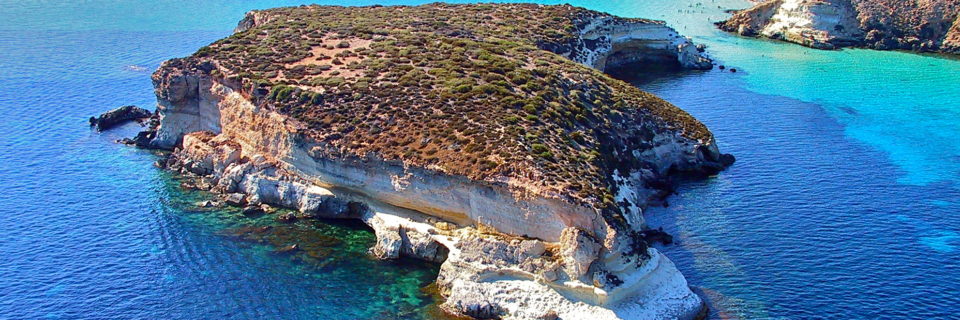In June 1943, during the Second World War, as a precursor to the Allied invasion of Sicily, the island was secured without resistance in Operation Corkscrew by the Royal Navy destroyer HMS Lookout and ninety-five men of the 2nd Battalion the Coldstream Guards. White flags had been sighted in the port, and when Lieutenant Corbett of Lookout approached the port in a motor launch, he was told that the island’s garrison wished to surrender. Mussolini had given the garrison his permission to surrender because it lacked any water. The Governor’s formal surrender was accepted in the island’s underground command-post by a combined Army/Navy delegation sometime before 9:00 pm on 12 June 1943. During this process, the governor handed his sword to the Coldstream company commander, Major Bill Harris. A second unofficial claim has also been made regarding the capitulation of the island, when earlier that same day elements of the garrison had also attempted to surrender in unusual circumstances when Sergeant Sydney Cohen, the pilot of a Royal Air Force Supermarine Walrus aircraft landed having run low on fuel and suffering problems with his compass. Cohen’s exploits were commemorated in a Yiddish play The King Of Lampedusa that ran for six months
The first telephone connection with Sicily was installed only in the 1960s.[citation needed] In the same decade an electric power station was built.[citation needed]
In 1972, part of the western side of the island became a United States Coast Guard LORAN-C transmitter station. In 1979, Lt. Kay Hartzell took command of the Coast Guard base, becoming “the first female commanding officer of an isolated duty station”.
The 1980s, and especially 1985 -1986, saw an increase in tensions and the area around the island was the scene of multiple attacks. On April 15, 1986, Libya fired two Scuds at the Lampedusa navigation station on the island, in retaliation for the American bombing of Tripoli and Benghazi, and the alleged death of Colonel Gaddafi’s adopted daughter. However, the missiles passed over the island, landed in the sea, and caused no damage.
On 4 January 1989, U.S. Navy aircraft from the carrier USS John F. Kennedy shot down two Libyan fighters approximately 200 kilometres (124 miles) from the island. The base commander was advised by U.S. Sixth Fleet Intelligence at La Maddalena that the Libyan president, Muammar al-Gaddafi, had threatened reprisals against the American commanders at Sigonella and Lampedusa. An Italian media frenzy followed that event which put Lampedusa in the spotlight.
The NATO base was decommissioned in 1994 and transferred to Italian military control.[citation needed]

